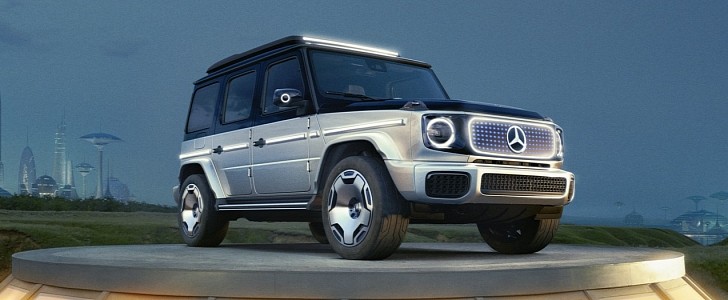On September 8, 2021, Sila Nanotechnologies announced it had developed a silicon anode that would immediately increase energy density by 20% in current lithium-ion cells. At the beginning of May, the company changed the story a bit: it created a high-silicon anode material that it would produce in the U.S. On May 17, the company said which EV would be the first to have it: the Mercedes-Benz EQG, aka the electric version of the G-Class.
Sila confirmed this high-silicon anode would be manufactured at its American plant in Moses Lake, Washington. This factory will be powered with hydropower, making it carbon neutral if the necessary raw materials are not delivered using fossil fuels. Initially, it will be able to provide enough material to power 10 GWh in cells if they fully replace graphite with it. If the high-silicon anode just partially replaces it, the plant will help make 50 GWh in cells.
That production capacity can be expanded by 15 times, meaning it could help make 150 GWh in cells that get rid of graphite or 750 GWh when it is only partially substituted. Production should start in the first half of 2025, which will suit Mercedes-Benz just fine: it intends to make the EQG around that time as well.
Curiously, the announcement suggests that the next-generation (or refreshed) G-Class will be made in the U.S. Exporting this high-silicon material to Europe would not make sense due to transportation costs. Although G-Class buyers do not have tight budget restrictions, it is very unlikely that Mercedes-Benz will not try to make these cells to be as competitive as possible in terms of prices. In other words, Sila will probably ship the high-silicon anode to a battery plant in the U.S., which will send its cells to Mercedes-Benz in the U.S.
The new technology will help cells made with this anode reach more than 800 Wh/l at the cell level, a bit more than the 700 Wh/l in the best lithium-ion cells available on the market. Any help the battery pack can offer to a vehicle that is naturally heavy and not very friendly to airflow will be more than welcome. After all, the EQG will still have to look like a G-Class to seduce the same buyers.
Sila expects the high-silicon anodes to help it reach higher energy densities in the future. Batteries equipped with it would also be lighter – increasing range by reducing mass – and more robust. The company plans to use the high-silicon anode to create “forever batteries,” able to stand 10,000 cycles or 30 years of use.
That production capacity can be expanded by 15 times, meaning it could help make 150 GWh in cells that get rid of graphite or 750 GWh when it is only partially substituted. Production should start in the first half of 2025, which will suit Mercedes-Benz just fine: it intends to make the EQG around that time as well.
Curiously, the announcement suggests that the next-generation (or refreshed) G-Class will be made in the U.S. Exporting this high-silicon material to Europe would not make sense due to transportation costs. Although G-Class buyers do not have tight budget restrictions, it is very unlikely that Mercedes-Benz will not try to make these cells to be as competitive as possible in terms of prices. In other words, Sila will probably ship the high-silicon anode to a battery plant in the U.S., which will send its cells to Mercedes-Benz in the U.S.
The new technology will help cells made with this anode reach more than 800 Wh/l at the cell level, a bit more than the 700 Wh/l in the best lithium-ion cells available on the market. Any help the battery pack can offer to a vehicle that is naturally heavy and not very friendly to airflow will be more than welcome. After all, the EQG will still have to look like a G-Class to seduce the same buyers.
Sila expects the high-silicon anodes to help it reach higher energy densities in the future. Batteries equipped with it would also be lighter – increasing range by reducing mass – and more robust. The company plans to use the high-silicon anode to create “forever batteries,” able to stand 10,000 cycles or 30 years of use.

